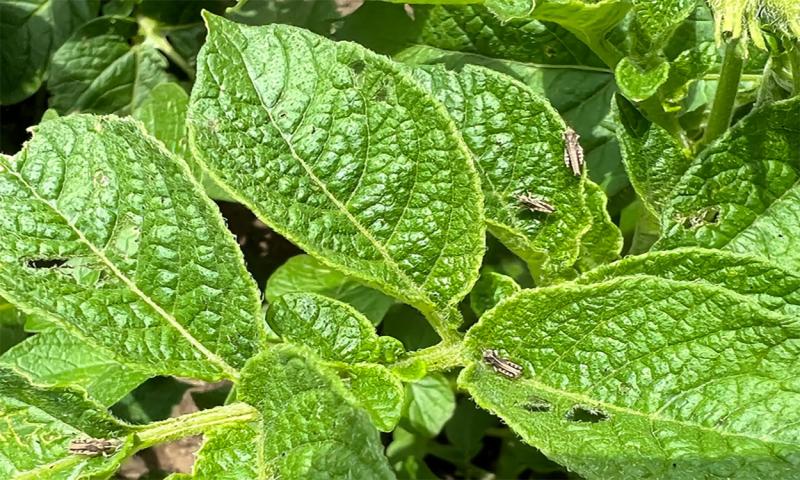
Written with contributions by Shelby Pritchard, former SDSU Extension Pest Management Specialist.
Originally Submitted: August 4, 2022
Large populations of grasshopper nymphs have been common observation in 2022. So far, the defoliation in gardens is obvious, but not a threat to the produce (Figure 1). One concern regarding these grasshopper populations is that, as the season progresses and they continue to grow, they will need additional resources. When large populations are present, it is not uncommon for the grasshoppers to move from grass to gardens, trees and flowers. Typically, grasshopper infestations are worse in areas where dry conditions are being experienced, as the grasshoppers begin searching for food. However, even in areas that are currently under drought stress, grasshopper populations are being observed.
If large grasshopper populations are observed in gardens, the use of a foliar insecticide may be warranted to protect the garden produce. Keep in mind that many foliar insecticides labeled for grasshoppers are broad spectrum and can impact non-target insects, like bees and other pollinators. When determining if an insecticide application is necessary, consider what plants are flowering and what parts of what plants are being harvested for consumption. It’s also important to remember that treating grasshoppers when they are still nymphs will result in more-successful population reductions. Adult grasshoppers are harder to manage.
The threshold for grasshopper nymphs that is used for crops and rangeland also can be applied to yards and gardens. For grasshoppers, the threshold varies based on life stage and is 15 to 20 nymphs per square yard and 8 to 10 adults per square yard. To determine how many grasshoppers are present, we recommend standing in the infested area and counting grasshoppers as they are moving in an area that is approximately one square yard.
To greatly reduce grasshopper populations in yards, the margins of the yard should also be treated. This would include road ditches and areas with tall grass or weeds. In all cases, make sure to read the labels and follow all label directions.


